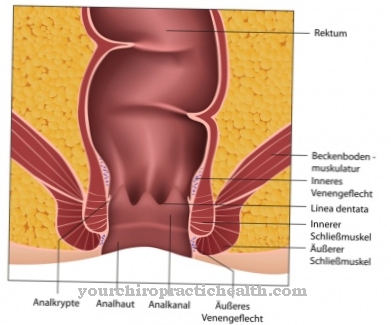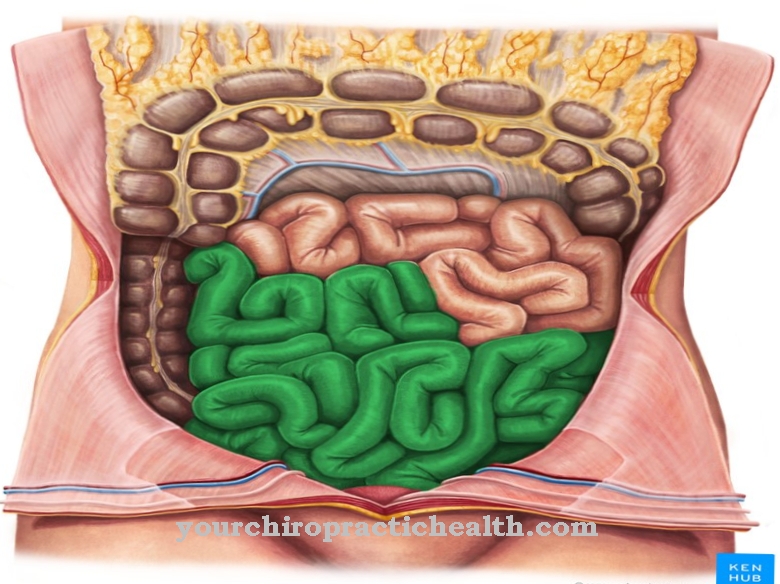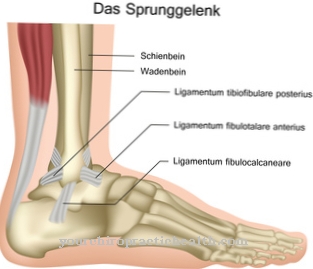Under the belly button is to be understood as a round depression which remains on the front of the abdomen after the umbilical cord has been severed. In humans, the navel can appear in different manifestations. At the same time, the belly button is also a target for a wide range of diseases that should be treated immediately.
What is the belly button?

Of the belly button, which is also known as the umbilicus in technical terms, is a rounded indentation in the middle of the front of the abdomen, which is visible in all placenta after birth.
The origin of the navel is based on the umbilical cord, which exchanges vital substances between the blood circulation of the pregnant woman and the growing organism during pregnancy. After delivery, the umbilical cord is removed so that the belly button closes and scars.
Even if from this point on it is no longer involved in the vital functions of the human organism, the navel can again come to the fore in the context of numerous diseases.
Anatomy & structure
A belly button consists of a collection of subcutaneous scar tissue over which a so-called papilla is laid. This represents a wart-shaped protuberance on the skin and creates the actual umbilical cord remnant.
In addition, the papilla is surrounded by a so-called umbilical ring. The navel can appear in many different forms. These depend on different criteria, which include, among other things, the genetic circumstances, the physical resilience, the handling and care of the navel and the quality of the abdominal muscles.
In general, however, a distinction is made between two basic forms of the belly button. The navel can be turned concave inwards or convex outwards. The inwardly turned variant is more common in humans. In very overweight people, the belly button can also appear in a kind of slit in the middle of the abdomen.
Function & tasks
The belly button no specific tasks are assigned in everyday life. However, it is involved in vital functions during pregnancy.
The navel is the starting point of the umbilical cord, via which the unborn child in the womb is connected to the placenta, the placenta. An exchange of vital substances between the unborn child and the mother's blood circulation is now made possible via the umbilical cord. These substances are essential nutrients and oxygen.
In addition, metabolic degradation products such as carbon dioxide are disposed of via the umbilical cord. After the birth, the umbilical cord is cut. This happens after the blood has stopped pulsing within the cord, which usually occurs around 5 minutes after delivery.
The navel then represents a kind of scar in the middle of the abdomen, which occurs after the umbilical cord has finally fallen off about 3 to 10 days after the birth.
Illnesses, ailments & disorders
In the area of Belly button some diseases can occur. For example, umbilical anomalies can develop that describe primary disorders of the navel.
This includes, for example, the amniotic umbilicus, in which a skin defect develops after the umbilical cord has been severed. This goes back to the fact that the amniotic cover expands onto the abdominal skin. Another anomaly is the flesh navel. The skin of the abdomen spreads over the umbilical cord and leaves a blunt-shaped navel behind after the umbilical cord has dropped.
Umbilical bleeding, which does not cause any further complications, is also possible in babies shortly after birth. Another disease in the area of the navel is the so-called umbilical hernia, which is also known as herba umbilicalis and occurs mainly in newborns. The umbilical hernia describes an intestinal hernia in which the peritoneum is everted. This leads to the swelling of the fracture, which can be accompanied by severe pain and pressure sensations.
Additional complications can be an ileus and the death of intestinal tissue. While an umbilical hernia occurs predominantly in newborns, adults can also be affected. It is mainly women around 50 who are particularly at risk from obesity, pregnancy or physical strain.



























